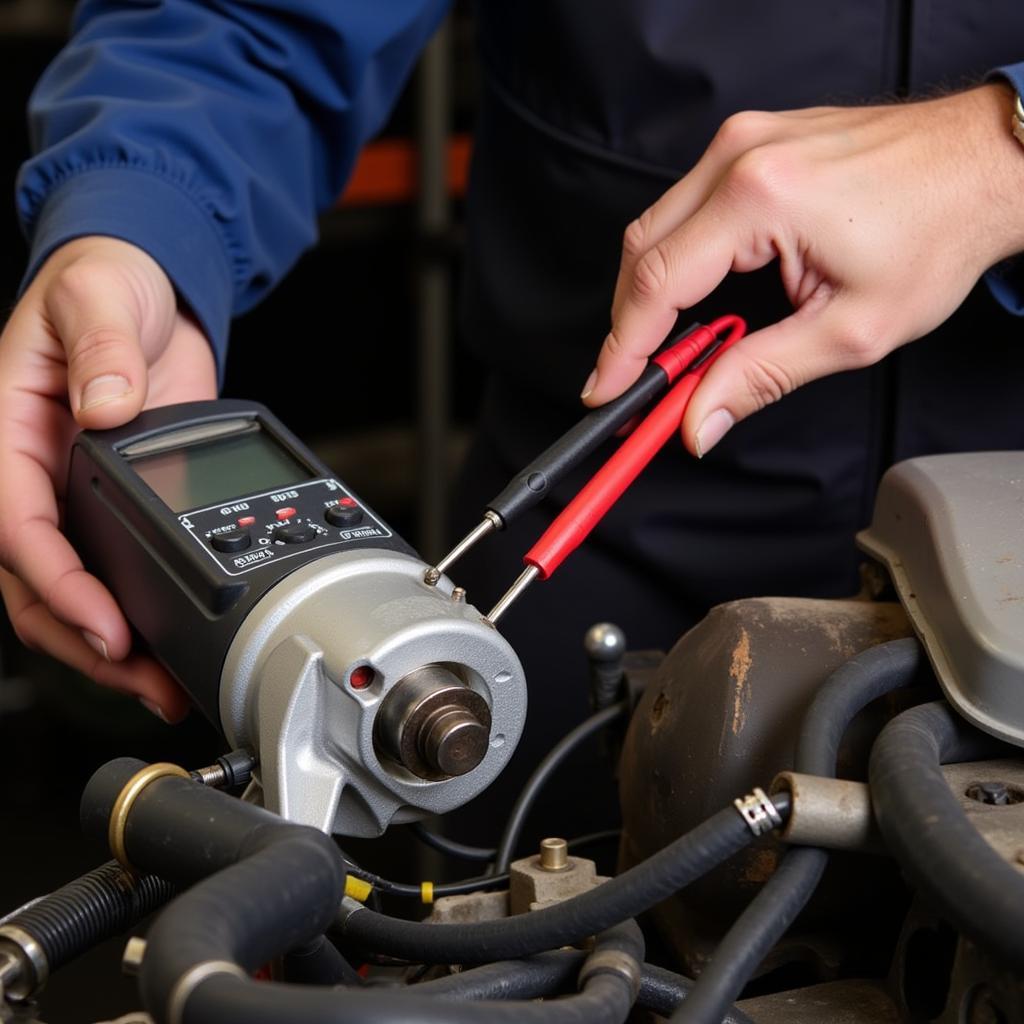You’ve just installed a brand new car battery, expecting your car to roar back to life, but it’s stubbornly refusing to start. What gives? Don’t worry, you’re not alone. This frustrating scenario is more common than you think. “New battery car still won’t start” is a search query that plagues many car owners, and we’re here to help you diagnose and fix the issue.
A new battery doesn’t guarantee a starting car. Several other components could be at fault. This guide will walk you through various possible causes and solutions, ranging from simple checks to more complex issues, empowering you to get back on the road. We’ll cover everything from corroded terminals to faulty starters, providing clear and concise steps to troubleshoot the problem.
Why a New Battery Car Still Won’t Start
Checking the Basics: Connections and Cables
First, double-check that the battery terminals are clean and tightly connected. Even a brand new battery won’t function properly with loose or corroded connections. Use a wire brush to clean any corrosion and ensure a snug fit. Also, inspect the battery cables for any damage or fraying. A damaged cable can disrupt the flow of electricity. Make sure the positive and negative cables are correctly connected to their respective terminals.
 Corroded Car Battery Terminals
Corroded Car Battery Terminals
After checking the terminals and cables, try starting the car again. If the car still won’t start, move on to the next step. It’s also a good time to consider if your key fob battery might be the issue. If you need a new one, see our guide on how to change a key fob battery.
Faulty Starter: A Common Culprit
A failing starter motor is a frequent cause of a car not starting, even with a new battery. When you turn the key, the starter engages the engine’s flywheel, initiating the combustion process. A faulty starter won’t crank the engine. You might hear a clicking sound when you try to start the car. Testing the starter requires a bit more technical expertise, so it’s best to consult a mechanic if you suspect this is the issue.
 Checking a Faulty Starter Motor
Checking a Faulty Starter Motor
Beyond the Starter: Exploring Other Possibilities
Beyond the starter, several other components can prevent your car from starting. The alternator, responsible for recharging the battery, might be faulty. A bad alternator will not charge the new battery, eventually leading to a no-start condition. Similarly, a failing ignition system can prevent the spark plugs from igniting the fuel-air mixture. If you’ve checked the basic car radio wiring diagram and everything seems fine, these could be the issues.
What if my Honda key fob needs a new battery?
Don’t worry, we have a guide on battery for key fob honda. This resource will walk you through the process of replacing the battery in your Honda key fob, ensuring it’s functioning correctly. This is a simple task that you can often perform at home, saving you a trip to the dealership.
Is it the Alternator? Testing for Charging Issues
A simple way to test the alternator is to check the voltage across the battery terminals while the engine is running. A healthy alternator should output around 14 volts. If the voltage is significantly lower, the alternator might be the culprit. Another common problem is a blown fuse or a faulty relay. Check your car’s owner’s manual for the fuse box location and identify the fuse related to the starting system.
“Often overlooked, the ignition switch can also be a problem. If the ignition switch is malfunctioning, it might not be sending the correct signal to the starter,” says John Smith, Lead Automotive Diagnostician at Smith Automotive Solutions.
 Testing the Car Alternator with Multimeter
Testing the Car Alternator with Multimeter
Conclusion: Getting Your Car Back on Track
Dealing with a new battery car that still won’t start can be frustrating, but by systematically checking the components discussed above, you can pinpoint the problem and get your car running again. Remember to check the battery connections, inspect the starter, and consider other potential issues like the alternator and ignition system. If you need to replace your BMW key fob battery, check out our guide on replacing bmw key fob battery. And if your car’s AC needs some attention, you might find our article on how to drain and recharge car ac helpful.
“Regular maintenance and inspections are crucial to prevent such issues. A simple battery terminal cleaning can save you a lot of headaches down the road,” adds Maria Garcia, Senior Automotive Technician at Garcia Auto Repair.
Remember safety first. If you’re unsure about any step, consult a qualified mechanic.
“Don’t underestimate the importance of a good quality battery. Investing in a reliable brand can minimize the chances of future starting problems,” advises David Lee, Electrical Systems Expert at Lee Auto Electric.

